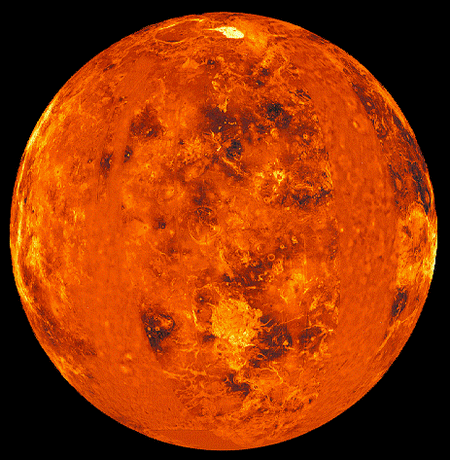3
2009
Who Discovered Venus
Venus is the earth’s nearest neighbor. Aside taking its name from the Greek god of beauty, Venus is also known as the Evening Star. Venus can be seen in the sky before sunrise and after sunset. Venus is closer to the sun than it is to earth. The 6th largest planet in the solar system, is a rarity: It is the only planet that orbits clockwise. Venus rotates with barely 1% difference.
Earliest sightings of Venus
In ancient Hindu astrology Venus is called Shukra. Meanwhile the Babylonians had observed Venus as early 1600 BC. They called the planet Ishtar, who was the goddess of love and womanhood.
Long before the telescope was invented in the West, Venus known as the wandering star. Westerners thought the morning and late afternoon Venus were two different planets. Phythagoras was the first to know they are one and the same. He discovered that in the 6th Century BC. But he thought Venus goes around planet Earth. In the 17th century Galileo noticed that Venus had traits like the moon: Venus appeared to have lumps on either side and at times took on a crescent shape.

Venus observers
Mikhail Lomonosov, a Russian genius, first discovered Venus’ s atmosphere in 1761. Johann Schroter made further observations of the planet’s atmosphere in 1790. He figured out that when Venus appears as a crescent, its cusps stretches beyond 180 degrees. He was correct in guessing that this caused by sunlight breaking up in a dense atmosphere. Chester Smith Lyman first discovered the ring around dark side of the planet. Venus’ atmosphere is very dense. This causes a problem to scientists who want to know the planet’s rotation period. Giovanni Cassini and Johan Schroter thought Venus had a 24-hour rotation period.

Venus and Earth
Venus shares some traits with planet Earth. Like Earth, Venus has silicon rocks on its surface. That is why Venus is considered as Earth’s sister planet. Venus is like Earth in terms of size and makeup. But Venus’s atmosphere is too dense to host any life form: it is full of sulfuric acid clouds. The extreme heat of the atmosphere dries up all bodies of water. The burning temperature is caused by huge amounts of carbon dioxide and sulfur dioxide. Venus’s surface is far hotter than Mercury’s. Mercury is closer to the sun than Venus. Venus’s atmospheric pressure is 90 times stronger than Earth’s.
Majority of Venues’ surface features are named after women.
Moreover, Venus and Earth has the same core that is made up of compact iron deposits. But Venus’ mantle is riddled with thawed out rock formations. The center of Venus is very similar to that of Earth.
Space missions to Venus
The first space probe mission to Venus was the Russian Venera 1. But Earthly contact was lost seven days after it went into space. The first spacecraft that successfully came close to Venus was America’s Mariner 2. It did so in 1962. Since then Venus has been visited by more than 20 spacecrafts.

 An article by
An article by 




